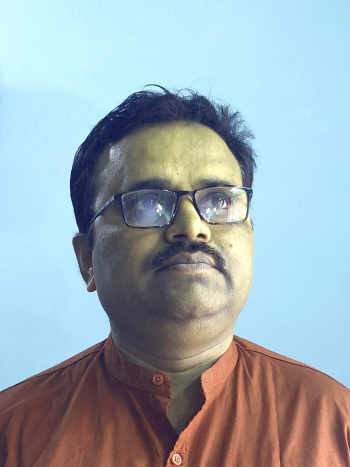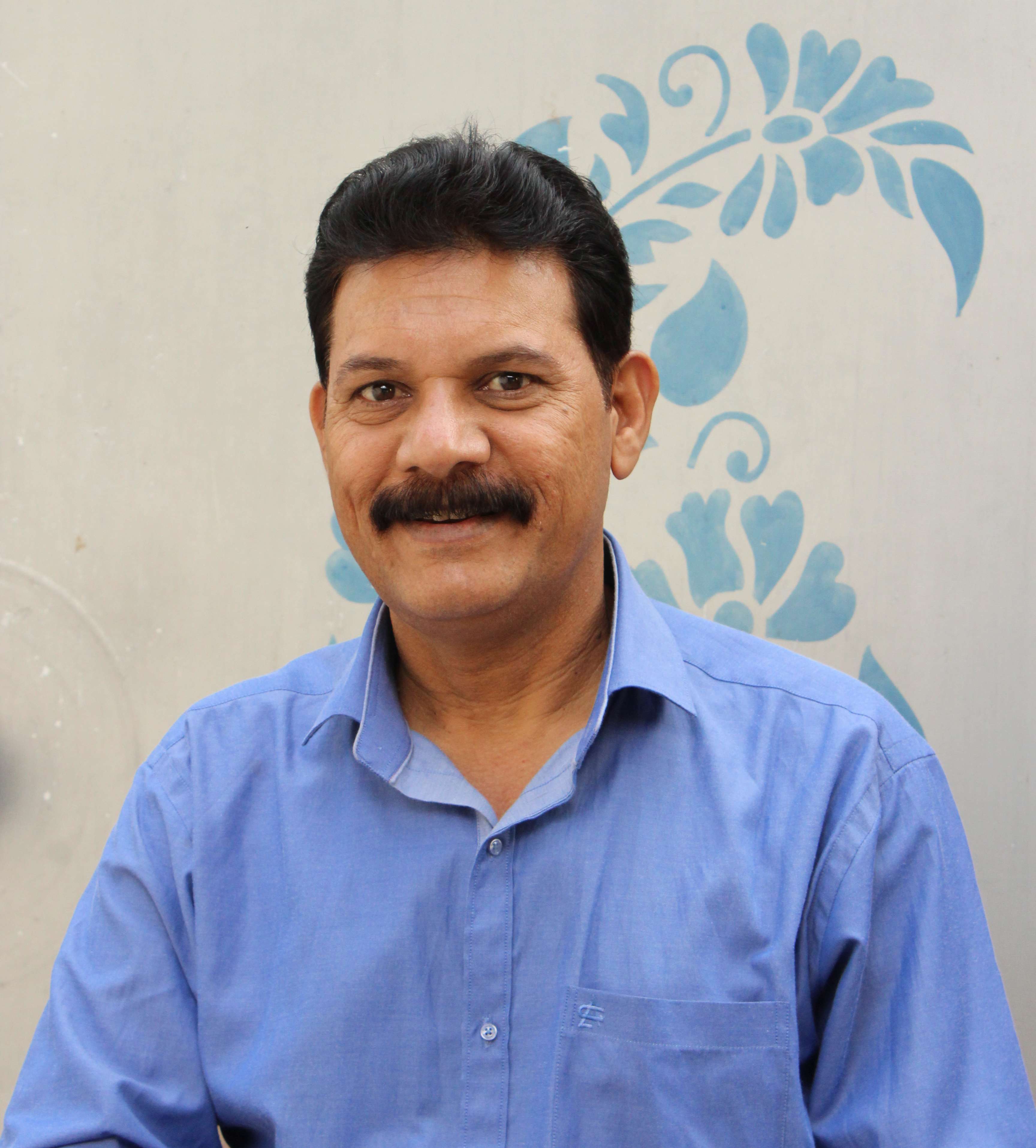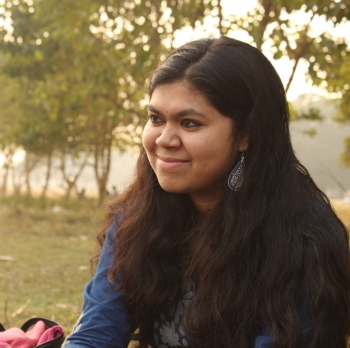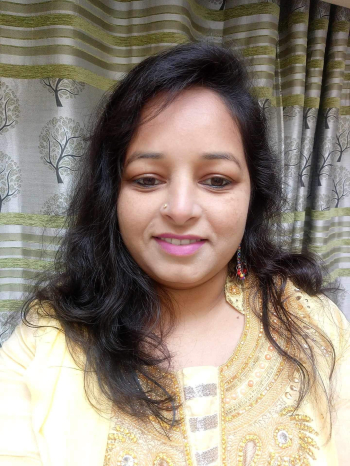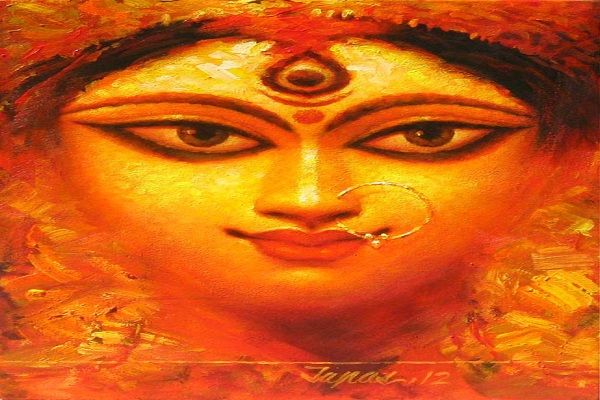
When I became conscious enough to observe and process my surroundings, I was fairly bewildered to look as to why other ladies don’t fancy to carry a sword and have some furious animal such as a lion as their vehicle. I also used to ponder that while watching Maa Durga paintings for hours trying to contemplate how she managed to fight in a heavy but beautiful sari. My mother doesn’t even know how to drape a sari. Forget about doing anything while wearing one!
In my heart, I longed for those ornaments which were so intricately designed for the
Goddess. All principles of physics, space, and time were found kneeling in front of the mighty Hindu Goddess when I tried to justify her balance on the back of her angry lion. The animal and the Goddess seem to have a bond that defies all laws of nature. And why not, she is Durga after all.
In a society where girls are not allowed to even raise their gaze, she managed to kill a demon to save all Gods who were MEN (please pardon the emphasis) in a splendid sari with the help of deadly weapons and her fierce lion.
Moreover, she only visits her marital place for nine days according to a popular belief of north India-just nine days for that marital home where she should stay till eternity! In some parts, it is said that for those nine days she actually visits her maternal home- just nine days for those parents who gave her birth!
Even if I tried to question the patriarchal norms of the conformists in the name of Maa Durga, I was not paid any attention because I was a child and no one was bound to provide me answers despite the fact that they were quite relevant.
Also Read: Mystic Story of Goddess Durga from Southern India
Though, my maternal grandmother tried to explain. She said that Durga was a Goddess. She was actually a part of Gods, all their weapons and might belong to her so she could kill Mahishasura who could only be killed by a woman.
I would like to re-produce in my twisted way Jacques Saunière’s dying declaration who was killed in The Da Vinci Code by Dan brown-
Oh! Draconian Patriarchy.
Oh! Lame Society
For argument's sake, let us just assume that this is not mythology we are talking about. It is an actual history. She was a woman who valiantly fought and saved Gods in a heavy costume. She did right the wrong done by Brahmaji who gave Mahishasura a boon without contemplating the consequences. How disguised patriarchy interprets it: - She is a woman but she was made from the spark of Gods i.e. men. So, she owes that to them. Oh c’mon!
I got it! I was not going to get any plausible answers and no one was going to allow me to challenge their existing cultural and societal norms where Maa Durga is worshipped but her manifestations, the other women are treated in every possible humiliating and degrading ways. This is how the warrior and unruly Maa Durga was domesticated.
In Bengali culture, unlike northern India, she is considered as a daughter. The mythologies and related icons with their respective symbology are to be perused to understand the present form of Maa Durga which she is worshipped despite being rebellious and furious.
Men and their religion try to explain the provenance of Durga worship according to the ancient traditions of Taitteriya Aranyaka. It is a part of Krishna Yajurveda. It has instructions to perform every kind of Yajna and Pooja for paying your tribute to every god and Goddess. But, how Durga is worshipped in the present form is not more than 300 years old.
Now, the hierarchy among deities has been largely fixed. Each deity has been ascribed to their respective roles according to their nature and powers. Durga is seen as a daughter and they shower their motherly affection and love (vatsalya) upon her. They have the same feelings of love for BaalGopal or Krishna in infant form. Similarly, in north India, she is seen as a bride who has come for the first time to her marital place and ladies sing hymns and folk songs about how they would give her gifts and jewelry.
On the other hand, when devotees are worshipping Kali, another fiery form of Maa Durga, they tremble with fear and foreboding and ask for her forgiveness for any wrong done. Two manifestations of the same Shakti gets different treatment depending upon their form. This doesn’t mean that kali can’t have a feeling of affection and Durga can’t be feared. Can I even say that these Goddesses are the same?
Also Read: Demystifying the Significance of Navratri and Understanding Devi
It is a common joke among historians, mythologists, and anthropologists that students studying the history of religion in India face an avoidable challenge of separating truth from the chaff. History and Myths are so convoluted that it is difficult to peel their layers off to find the veritable lore and rhapsodies in scriptures and ancient literature. In theory, the forms are the manifestation of the divine and supernatural forces. For example, you must have seen many Maa Durga Paintings. Generally, there are nine Shakti that we worship in Navratri that is depicted beside Maa Durga.
I say no! How can we say that these divine entities are the same when we know that they had different purposes of origin? They have distinct identities that are conflicting in nature. But, our own non-acceptance towards non-conformists ideas seem to keep us away from the truth. You can clearly tell the difference between the two forces of nature even by looking at their famous abstract paintings. Their depiction on the canvas is so diagonally opposite. Or I can say that truth comes to us but we turn a blind eye to it.
Assigning Goddesses their patronymic names is another story by which dogmas are justified. Eventually, everything boils down to one thing. Goddesses, even in their fiery form as delicate, beautiful, motherly, caring, and all those good things that make her ‘Maa’. I don’t know when that time would come when we will stop assigning watertight compartments to individuals based upon misinterpreted religion.












